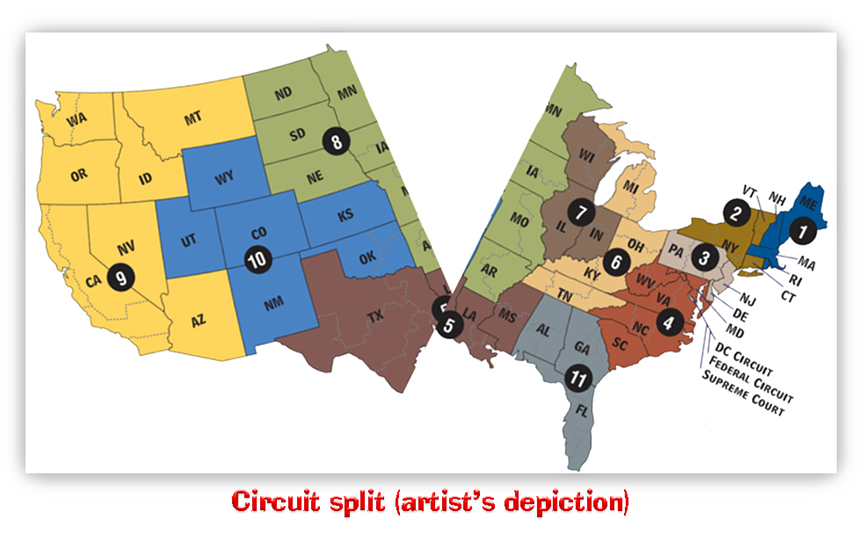We post news and comment on federal criminal justice issues, focused primarily on trial and post-conviction matters, legislative initiatives, and sentencing issues.

NOT ALL SECOND 2255s ARE SECOND-OR-SUCCESSIVE, 6TH CIRCUIT SAYS
 Generally (a word that is employed dangerously where the law is concerned), every federal prisoner is entitled to file one post-conviction habeas corpus motion challenging his or her conviction under 28 USC § 2255. To file a second one – called a “second-or-successive” 2255 – a prisoner must first petition the court of appeals having jurisdiction over his or her district court for permission to do so.
Generally (a word that is employed dangerously where the law is concerned), every federal prisoner is entitled to file one post-conviction habeas corpus motion challenging his or her conviction under 28 USC § 2255. To file a second one – called a “second-or-successive” 2255 – a prisoner must first petition the court of appeals having jurisdiction over his or her district court for permission to do so.
Permission is only granted if the Supreme Court has handed down a retroactive constitutional decision that would affect the prisoner’s conviction or sentence, or if newly-discovered facts would convince a jury the petitioner was not guilty. These standards – set out in 28 USC § 2244 – are daunting.
Fortunately, while all men may be created equal, not all second-and-successive 2255s are.
 In 2007, Ronald Jones was convicted of meth distribution. It was not Ron’s first rodeo – he had two California drug distribution priors. Under 21 USC § 841(b)(1)(A), a defendant with two prior drug convictions would see his or her mandatory minimum set at 300 months. Ron got 360 months.
In 2007, Ronald Jones was convicted of meth distribution. It was not Ron’s first rodeo – he had two California drug distribution priors. Under 21 USC § 841(b)(1)(A), a defendant with two prior drug convictions would see his or her mandatory minimum set at 300 months. Ron got 360 months.
In 2016, Jim lost a 28 USC § 2255 post-conviction motion raising a Johnson claim. Then, last year, Jim got one of his prior state cases dismissed under California’s Proposition 47. He then filed a 28 USC § 2244 motion with the 6th Circuit, asking permission to file a second § 2255 motion raising a sentencing issue because he no longer qualified for the “two priors” § 841(b)(1)(A) enhancement, and his mandatory minimum dropped to 180 months.
Last week, the 6th Circuit denied Ron’s § 2244 as “unnecessary” and sent his § 2255 to the district court for consideration.
The Antiterrorism and Effective Death Penalty Act limits courts’ authority to hear “second or successive” § 2255 motions. But not all successive § 2255s are “successive” in the eyes of the law.
The Circuit held that “some second-try § 2255 motions are not ‘second or successive’ within the meaning of 2255(h).” Where “the events giving rise to a 2255 claim have not yet occurred at the time of a prisoner’s first 2255 motion, a later motion predicated on those events is not second or successive… A motion based on changes to a prisoner’s eligibility for parole, for example, is not ‘second or successive’ if the changes occurred after the prisoner took his first shot at 2255 relief. Section 2255 is strict, but (in this context at least) it does not demand clairvoyance – that prisoners predict their claims before they arise.”
For Ron, “the events giving rise” to his second § 2255 claim came about in 2021, when California dismissed and vacated his prior California conviction, well after the 2016 § 2255 petition.
 Not every Circuit agrees with the 6th on this. So far, only the 4th, 7th, 10th and 11th concur that petitions like Ron’s are not successive. The decision could set up a Supreme Court review, but the government would have to be the one to appeal, and that’s unlikely.
Not every Circuit agrees with the 6th on this. So far, only the 4th, 7th, 10th and 11th concur that petitions like Ron’s are not successive. The decision could set up a Supreme Court review, but the government would have to be the one to appeal, and that’s unlikely.
In re Jones, Case No. 22-5689, 2022 U.S.App. LEXIS 33759 (6th Cir., December 8, 2022)
– Thomas L. Root

